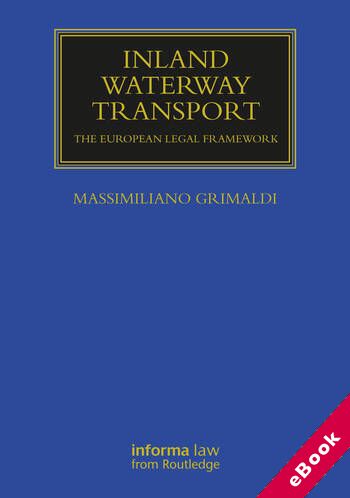
The device(s) you use to access the eBook content must be authorized with an Adobe ID before you download the product otherwise it will fail to register correctly.
For further information see https://www.wildy.com/ebook-formats
Once the order is confirmed an automated e-mail will be sent to you to allow you to download the eBook.
All eBooks are supplied firm sale and cannot be returned. If you believe there is a fault with your eBook then contact us on ebooks@wildy.com and we will help in resolving the issue. This does not affect your statutory rights.
This book analyses the European legal framework on inland water transport in light of the most recent legislation adopted and how the main Member States of Central Western Europe have implemented it.
Specifically, the book provides an innovative tool of analytical and systematic study of the various legislative EU measures that regulate the inland waterways transport sector, as well as for the comparative study and analysis of the relevant measures of implementation adopted by the afore-mentioned Member States. Each EU legislative measure is first explained in general terms and then commented on in detail with a specific analysis of the most significant articles, following a precise logical sequence of the topics; the corresponding national implementing measures are also examined in detail* describing any different ways of transposing the EU regulation, also with regard to any differences in approach by the Member States relative to the possibility of any derogations or exemptions from compliance with some measures, which is often provided for by the EU regulation. This approach is significantly useful for (i) a more systematic and user-friendly understanding of the EU regulatory framework, (ii) an equally better understanding of how EU measures have been transposed into national legislation and (iii) a revision of this European and domestic legislation, where appropriate.
Furthermore, the book is very useful for policy-makers of countries that are not members of the European Union (i.e. policy-makers from countries worldwide that have inland waterways), as they will have a reference tool to evaluate the possibility of reviewing their own regulation with a view to making it more similar to the EU one should the latter be better.
While preparing the book, analyses of the preparatory work of the legislation played a great role, as they are very useful for better understanding the legislative initiatives and the reasons for the choices made. Analysis of the doctrine and jurisprudence also played a great part. This allows the reader to have a thorough understanding of the subject from a scientific point of view and from the point of view of practical application.